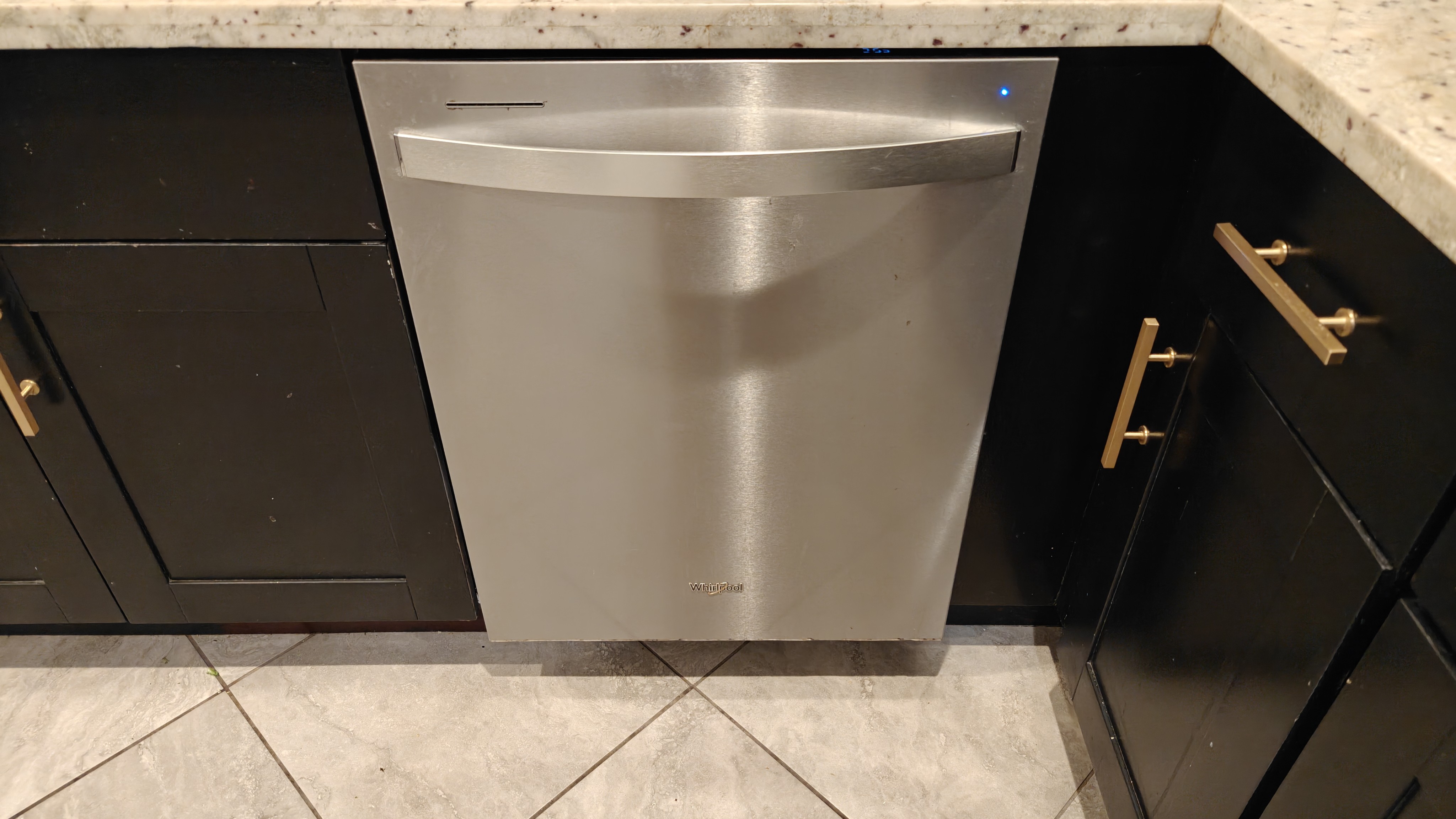How to maintain a ride-on mower: checks, cleaning and replacing components
From your lawn tractor’s perspective, these tasks are ride or die.
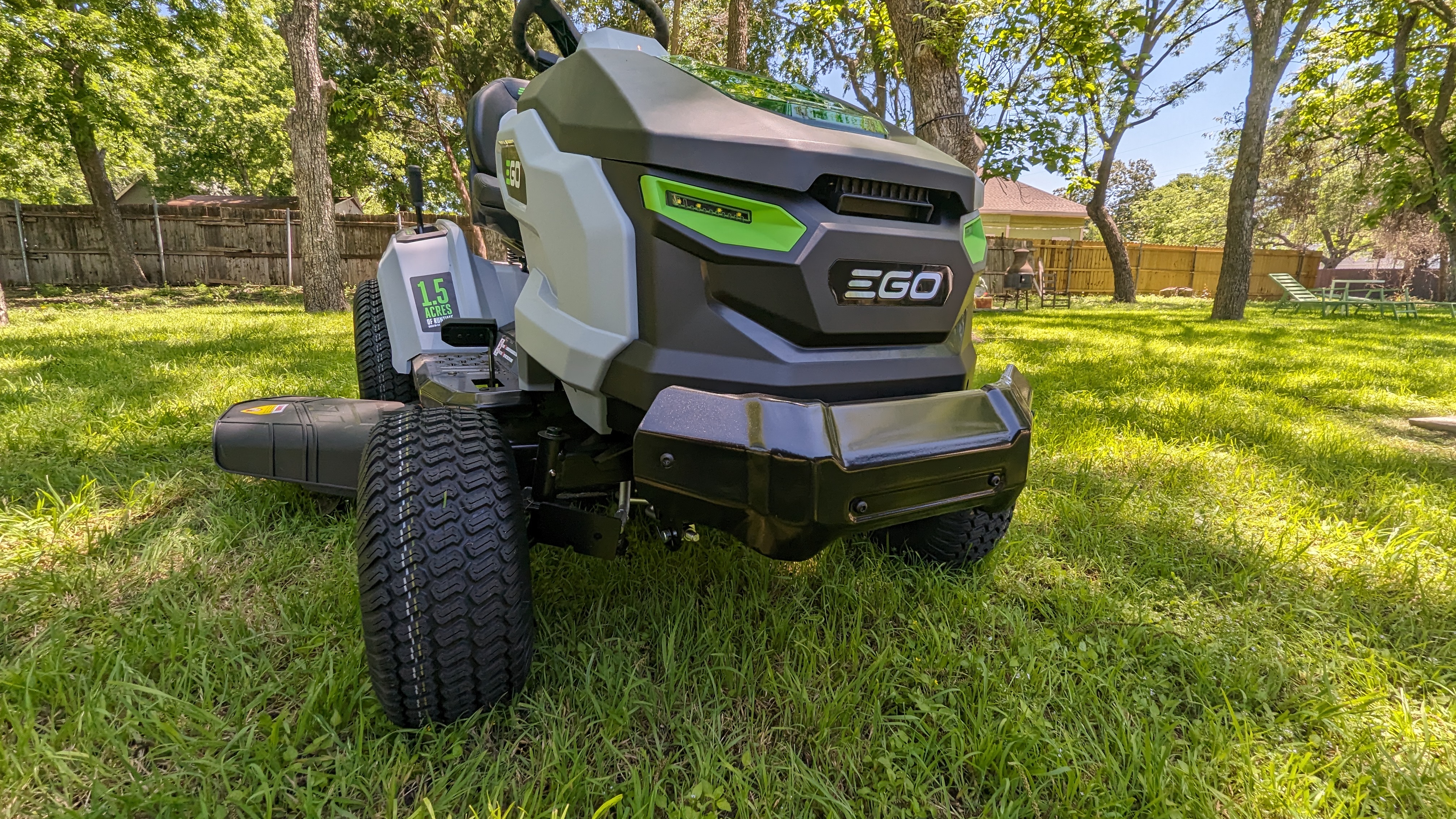
- Stiff-bristled brush
- Large cleaning cloth or towel
- File (like this 8'' Flat Hand Metal File on Amazon)
- Blade stop
- Mower jack (where required)
- Mechanical lubricant
- Gasoline or diesel (where applicable)
- Leaf blower (optional)
- Work gloves (like this pair of HANDLANDY Work Gloves on Amazon from $9.80)
Whether you use a tow-tastic lawn tractor or a precision-cutting zero turn mower, all of the best ride-on lawn mowers require ongoing maintenance in order to function as they should.
There are several routine upkeep tasks that every ride-on mower owner should do regularly, including fuel refills, condition checks and cleaning. You’ll also need to keep on top of occasional measures such as replacing worn-out parts and blade sharpening, as required.
In this guide, I’ll take you through five of the most important maintenance tasks that will ensure your ride-on lawn mower stays works safely and mows as well as it should. To guarantee the quality of advice provided, I interviewed two lawn care experts—Lowe’s Store Manager, Brian Shaunfield, and lawn care expert, Jimmy The Mower—who have kindly shared the guidance below.

Brian Shaunfield is Store Manager of a Lowe's location in Charlotte, North Carolina. Lowe's is one of the largest hardware retailers in the United States, offering a vast range of yard tools including ride-on mowers and lawn care accessories.
“Regular maintenance is essential in keeping your ride-on mower running reliably,” says Lowe’s Store Manager, Brian Shaunfield.
“A riding lawn mower should receive a full tune-up at least once a year—every 100 hours of use is a good rule of thumb.
“While some basic maintenance may seem trivial in the short term, long-term damage can build up and prevent your machine from functioning. Lawn mower engines are surprisingly precise and require specific parts, oil and upkeep,” he says.

Jimmy The Mower is a lawn care professional and prominent turf industry influencer. Thousands of lawn enthusiasts subscribe to Jimmy's YouTube channel, which features honest gear reviews and how-to guides.
How to maintain a ride-on lawn mower: quick steps
- Check condition before mowing
- Clean the mowing deck
- Maintain the power source
- Lubricate moving parts
- Replace or maintain worn-out components
How to maintain your ride-on lawn mower: Step by step guide
1. Check condition before each use
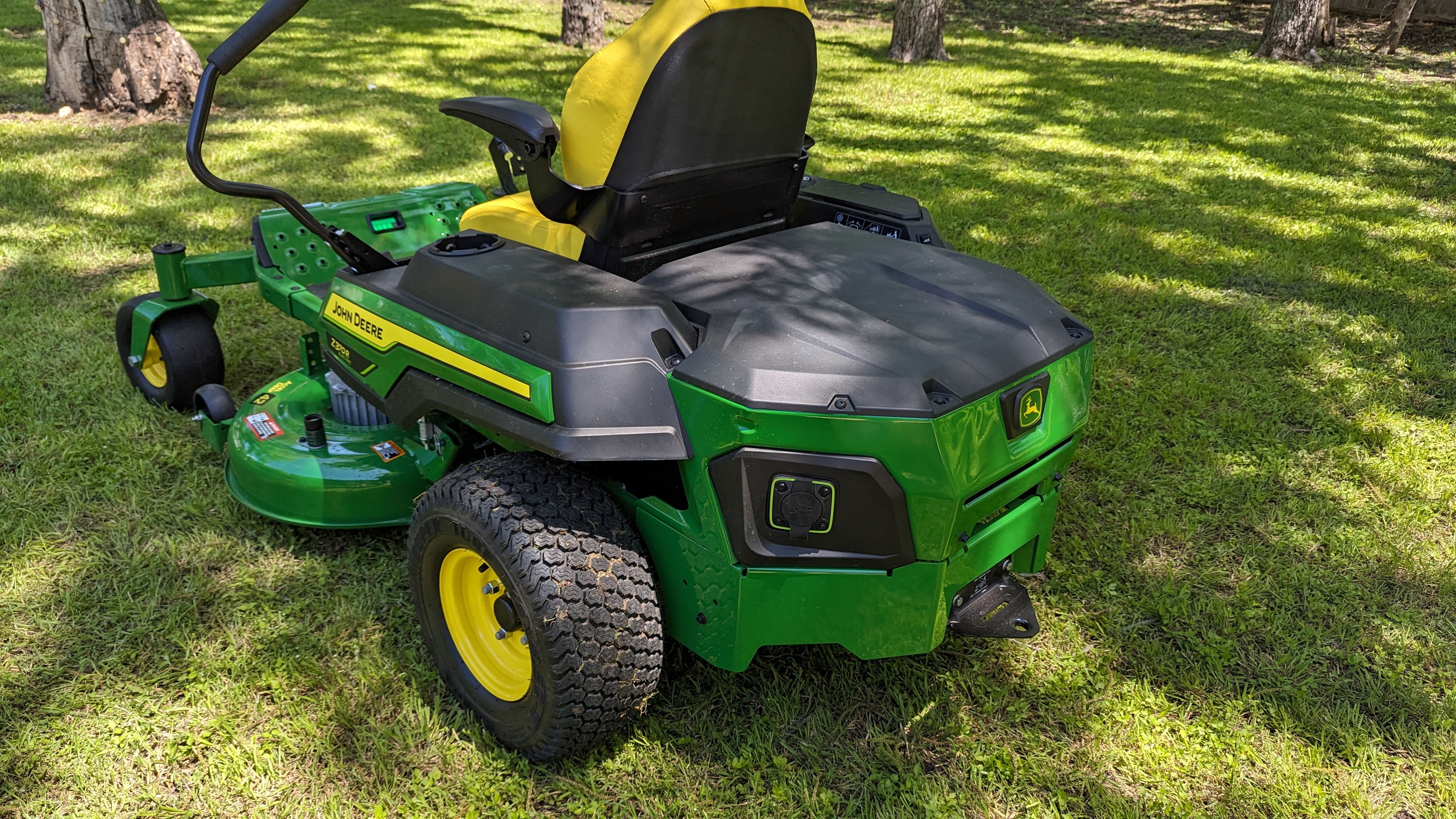
Good ride-on mower maintenance begins before you even start the mower, as you’ll need to check its condition to ensure it can mow safely.
“Whenever you use the mower, walk around it in your garage or shed and do a visual check,” says lawn care expert, Jimmy The Mower.
“Make sure that the tires are fully inflated, and there are no signs of damage, leaks or drips.
“And if you’re an occasional, domestic user, double check the oil level—and the water level, if the mower has a water-cooled engine,” he adds.
If the oil or water level looks too low, top up the relevant fluid before you mow.
“It’s also crucial to make sure all shields and deflectors are in place and undamaged, and make sure the tires are inflated and the brakes are working properly,” says Shaunfield.
“Plus, before you start mowing, move the machine to an outside area before running the engine. Avoid enclosed areas, like a garage, even if the doors and windows are open, because running an engine indoors can produce harmful fumes.”
How often: Before every mow
2. Clean the mowing deck
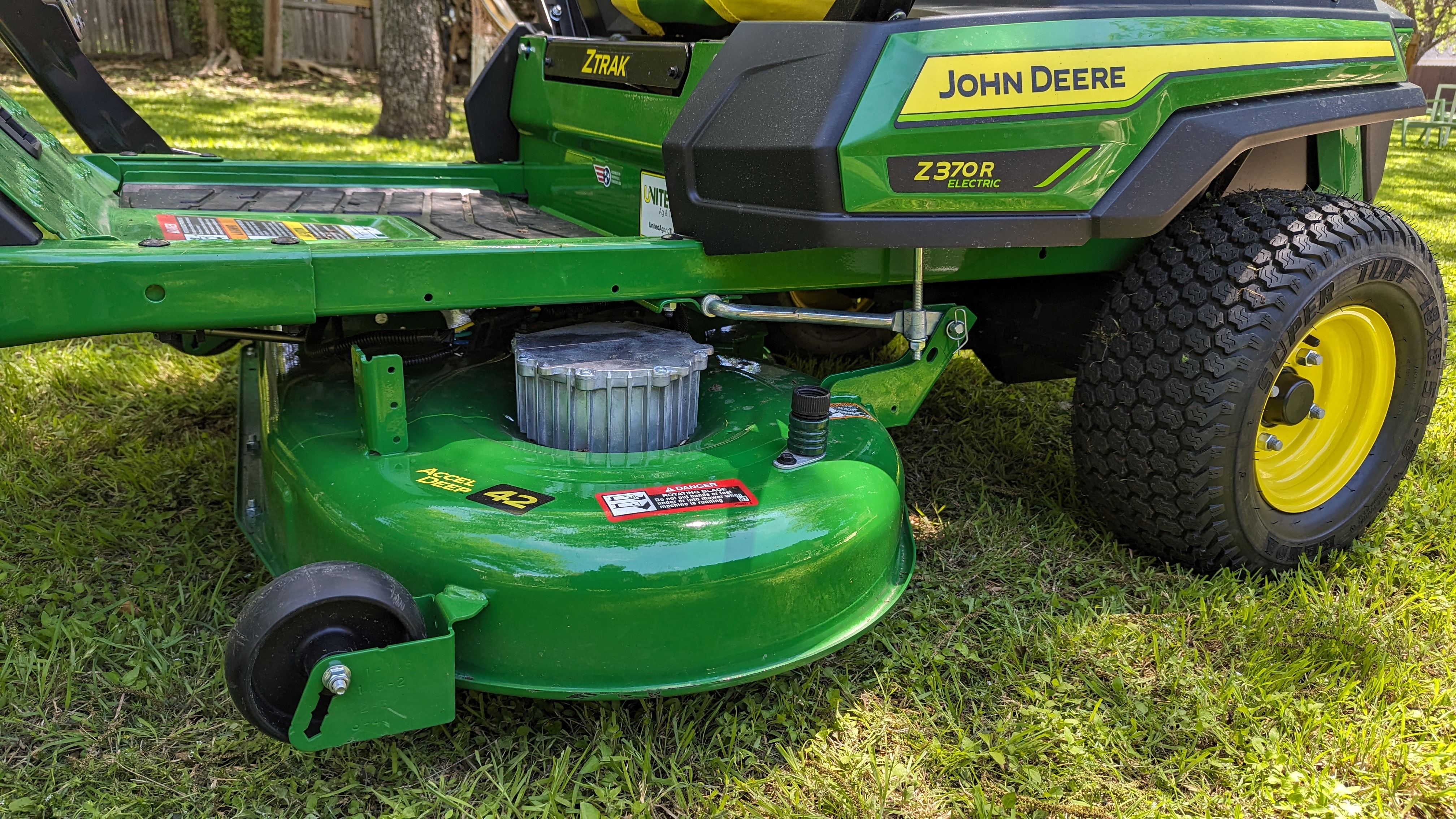
Every time you use your ride-on mower, you can bet your bottom dollar grass clippings and other natural debris will accumulate on some of its components—especially in the mowing deck, which houses the blade(s).
If left unattended, this detritus can be a problem, as it may cause parts of the ride-on mower to rust and fail.
“The most important thing is cleaning the mowing deck after every use, because grass sticks to this easily, and the moisture it carries can very quickly cause rotting and lead to rust,” says Jimmy The Mower.
To clean your ride-on mower’s mowing deck, you’ll first need to access the deck, which may be difficult.
With some models, you can remove the deck (which will be heavy) and upend it, allowing easy access for cleaning with a stiff-bristled cloth (and a hose for rinsing, if absolutely necessary). Remember to dry the mowing deck very thoroughly using a large cloth or towel when you’re done cleaning.
If you can’t access the underside of the mowing deck by removing the component, you might decide to use a mower jack (like this model, $629.99, Lowe’s) to safely lift the entire mower, taking all appropriate safety precautions.
Other ride-on mower parts that require very careful cleaning include grass collectors and mulching accessories.
How often: After every use
3. Maintain the power source
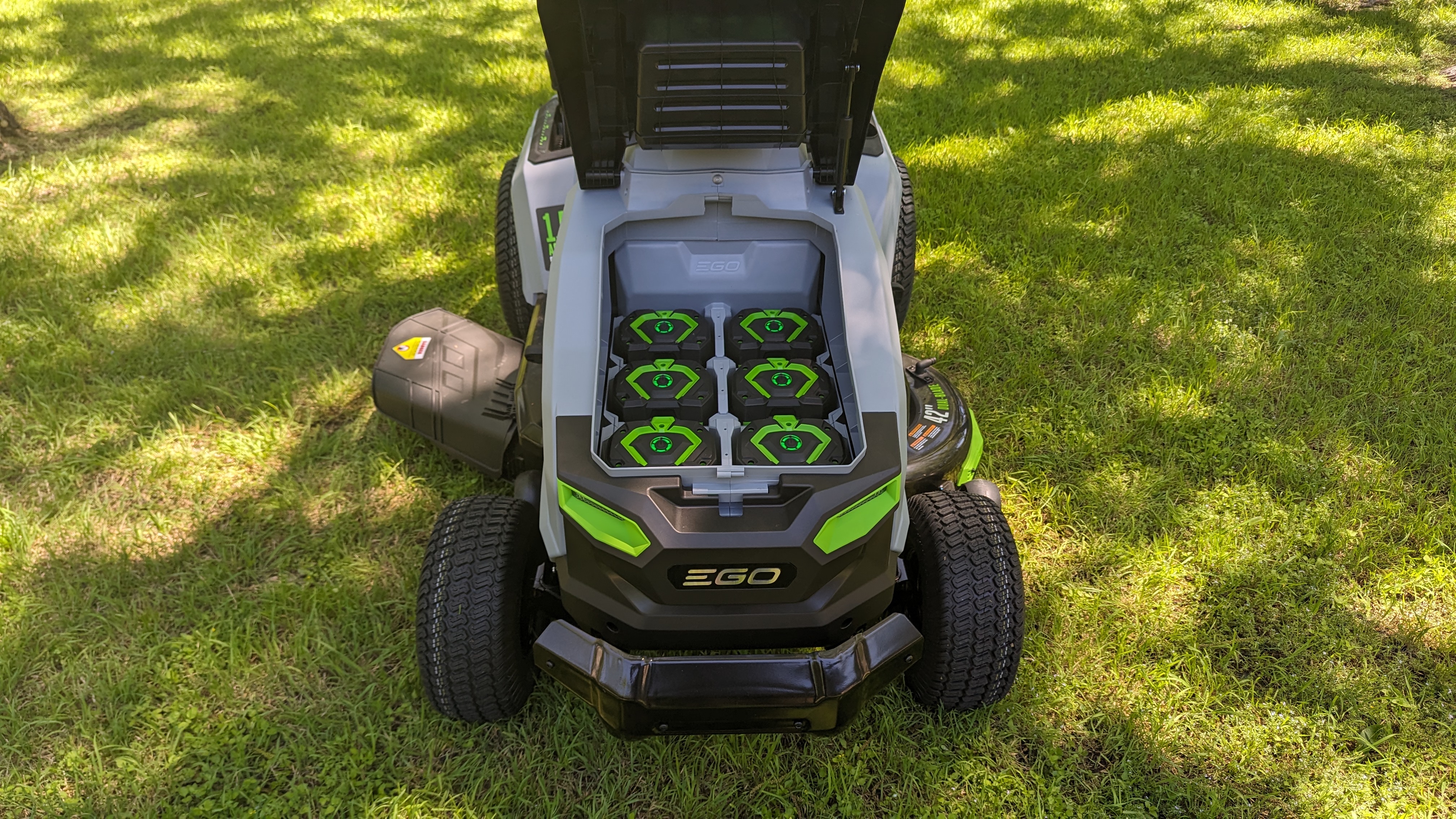
You’ll need to continually maintain the power source of your ride-on mower, whether it runs off gasoline or a less commonly used fuel such as diesel, or rechargeable batteries.
On a regular basis—perhaps once weekly, or once per use—replenish the mower’s power source. That could mean adding more gas or diesel via the relevant inlet, or it could mean recharging batteries using your household electricity.
And annually, between the end of one mowing season and the start of the next, you’ll need to take special steps to ensure the power source is ready to use again.
“Every year, a gas ride-on mower will need professional engine servicing, new filters, an oil change and spark plug replacement,” says Jimmy The Mower.
“If you have a cordless electric ride-on mower, make sure the battery stays topped up over winter.
“Remember to keep batteries somewhere warmer than the shed or garage during very cold weather,” he says.
How often: Weekly and annually
4. Lubricate moving parts
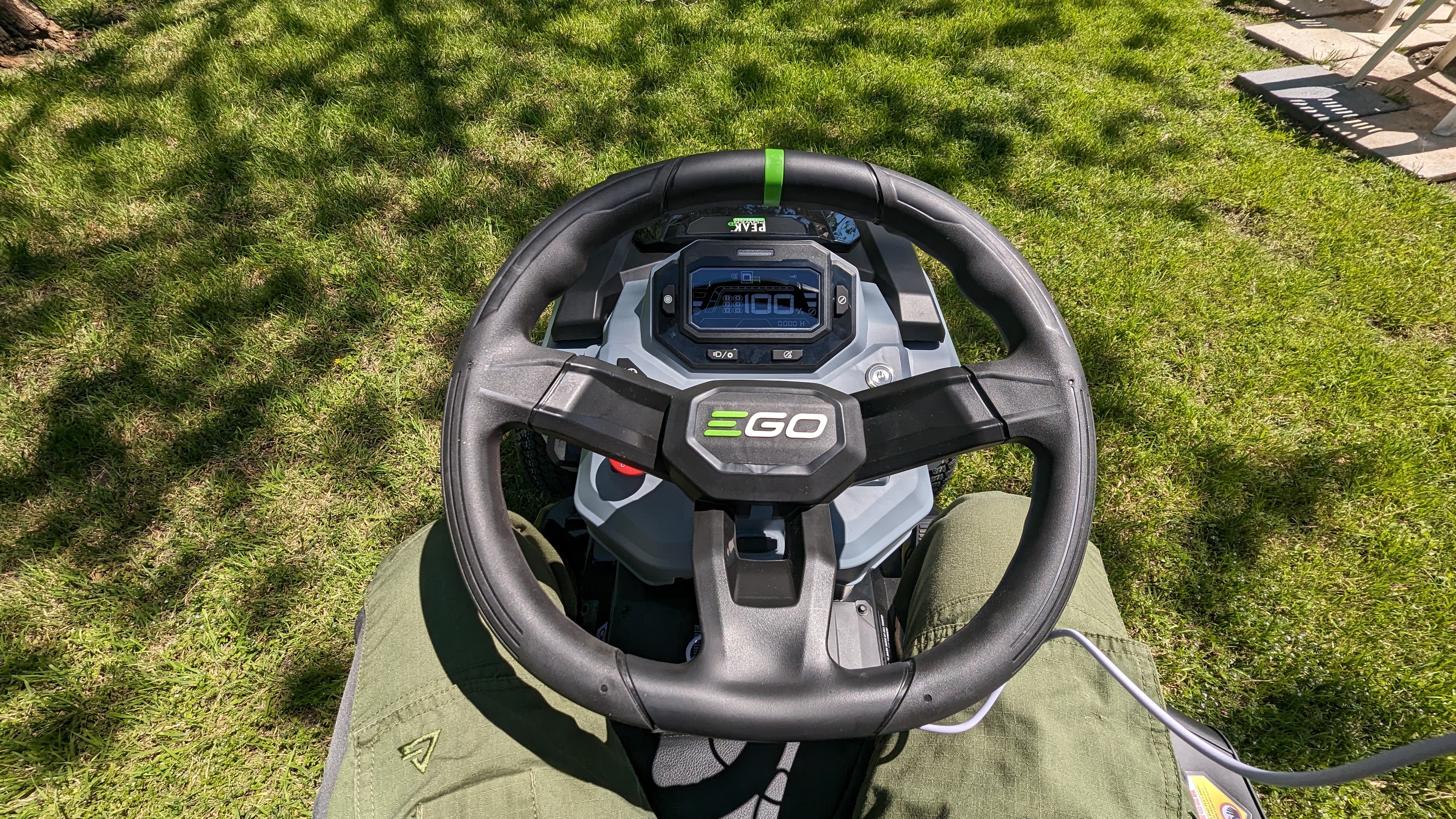
Keeping mower parts lubricated will encourage smooth operation, and minimizes overall levels of wear and damage.
“Any moving parts need to be well lubricated so they don’t seize up and fail, so grease them regularly,” says Jimmy The Mower
Many of the mower parts that require lubrication the most are fitted with grease nipples, which you can use to direct lubricant to the right places. Look for these entry points on bearings, mowing deck spindles, and the steering and axle assemblies
How often: Frequently (weekly, or at least once per month)
5. Replace or maintain worn-out parts
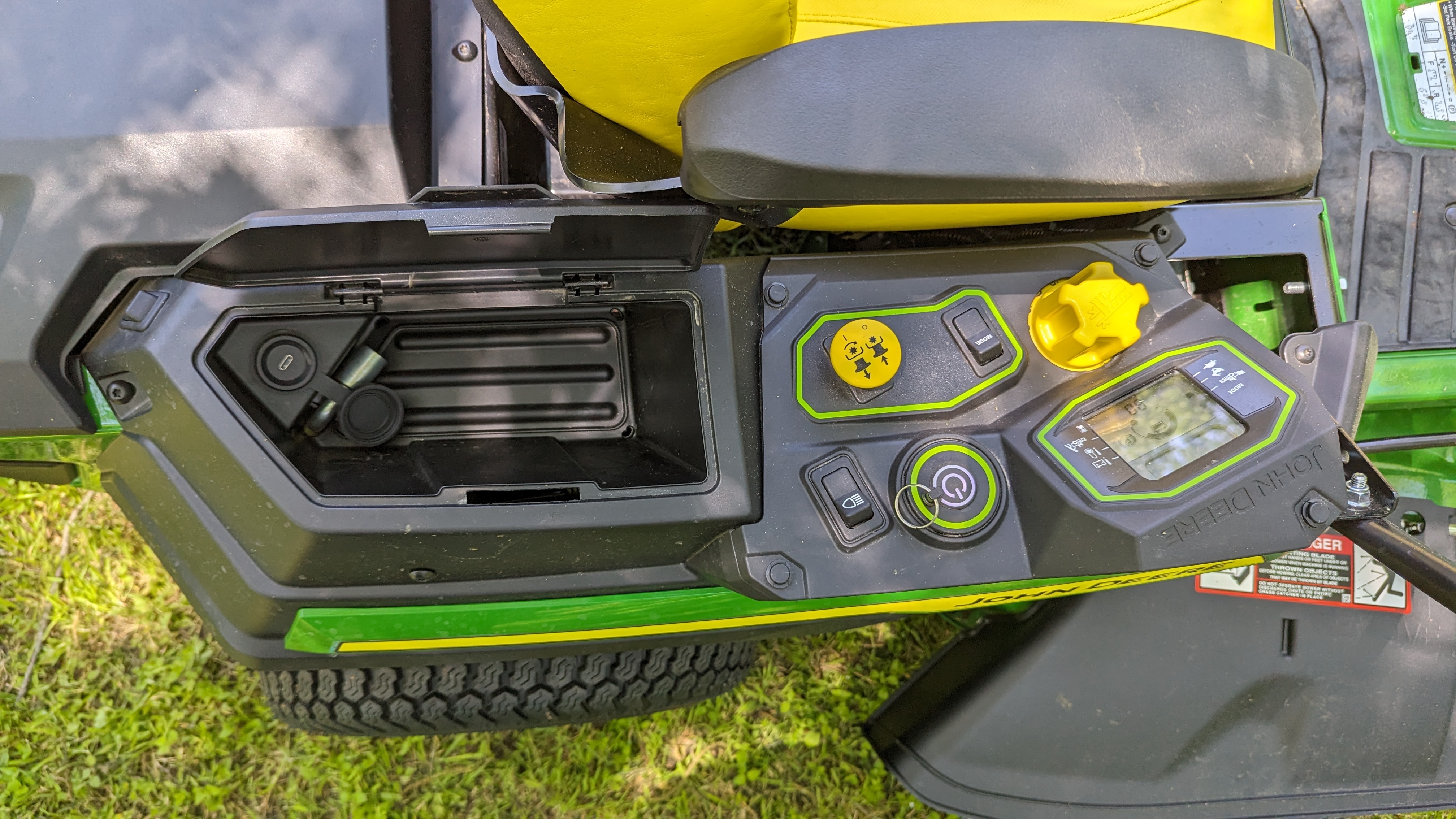
The lifespan of a ride-on lawn mower is likely to be at least 4-5 years, or 400-500 hours of mowing. Some models can last much longer.
In order to get the most out of your mower during its lifespan, you’ll need to replace or maintain certain components as they wear out.
“If you have the right DIY skills and are familiar with machinery, you may be able to switch out a part yourself,” says Shaunfield.
“For instance, changing the air filter, spark plug or changing the oil are occasional maintenance tasks that come with a mower.”
Another key task that many ride-on mower owners carry out for themselves is sharpening the mower blade. You can do this using a blade stop (like this one, $10.98, Lowes) and hand file, provided it’s possible to safely access the underside of the mowing deck.
Replacement parts for your model of mower should be purchasable via the manufacturer.
How often: as required
Final thoughts
With their powerful drive systems and mowing components, ride-on lawn mowers far exceed the maintenance requirements of a cordless lawn mower.
Sign up to receive the latest news, reviews, buying guides and deals direct to your inbox
If you plan on purchasing one of these highly capable lawn care tools, you should be mindful that ongoing maintenance will be essential to its long-term performance and safe usage. At the very least, you'll need to carry out all the maintenance steps above—and you'll almost certainly need some professional help along the way.
How to maintain your ride-on lawn mower: FAQs
Are some ride-on mowers more complicated to maintain than others?
There’s a lot of variety in the ride-on mower market, and as a result, one model may have very different maintenance needs to another.
A key point of difference is the fuel source used to power the mower. Gas or diesel ride-on mowers are powered by a combustion engine, which will have various components that require servicing, including a carburetor, spark plug and air filter. This makes gas ride-on mowers more complicated to maintain than a cordless electric ride-on mower—although lithium-ion batteries come with their own demands, including regular charging, occasional replacement and proper handling to extend the life of your lawn mower battery.
Whichever ride-on mower you’ve purchased, you should have received a comprehensive instruction manual with the product. If you’re ever unsure how to maintain the mower, refer to the manufacturer’s guidance.
Which ride-on mower maintenance tasks require professional attention?
Ride-on mowers often appeal to folks who have some amount of mechanical knowledge or enthusiasm for vehicle maintenance. If that sounds like you, then you might feel comfortable handling most of the issues that arise in your ride-on model.
However, there are certain ride-on mower maintenance tasks that will usually require input from a specialist mechanic or engineer. These issues might include problems with the hydraulics system on a zero-turn lawn mower, failure to start with an undiagnosed cause, and replacing faulty or damaged internal components.
Do towed ride-on mower attachments require maintenance?
If you have a ride-on lawn tractor, there’s a pretty good chance you have some riding lawn mower attachments to go with it.
Buying Guides
Best cordless lawn mower: top battery-powered lawn mowers to tackle your yard
Reviews
Worx Landroid S WR165 review: an intermediate-level robot lawn mower
STIHL RM 655 VS Lawn Mower review: a premium gas lawn mower which is a cut above the rest
DeWALT DCMWSP244U2 Cordless Self-Propelled Mower review: an efficient, long-lasting tool
Dewalt DCMWP600X2 60V MAX Cordless Push Mower review: lightweight yet powerful
Husqvarna Automower 450XH review: a fantastic, if flawed, lawn buddy
Mammotion Luba 2 AWD 5000 review: a tech-heavy robot lawn mower for large yards
Segway Navimow i105N robot lawn mower review: smarter, simpler, superior?
From dethatchers and scarifiers to spreaders and carts, all types of ride-on mower attachment should be diligently maintained, as this will help preserve both the attachment and the mower.
“Maintenance of ride-on mower attachments is paramount,” says Jimmy The Mower.
“You might use these items only a handful of times per year, so make sure they’re clean and dry before storing to prevent rust. A light coating of oil would be a welcome addition too.”
“Make sure the parts of your mower attachment are moving freely before attaching, because the mower’s drive system can seize up if the attachment doesn’t move,” he adds.

Pete has reviewed hundreds of gardening products for titles including TopTenReviews, Ideal Home and the London Evening Standard, as well as writing articles on diverse topics for other publications such as The Guardian and BBC Good Food. Pete loves spending time in his yard – although, having just read The Day of the Triffids by John Wyndham, he is regarding his plants with a newfound suspicion.
